
Amy Haynes
I am a UX designer with a background in fine art, and a love of creative problem solving and a deep interest in user perception, who wishes to continue to grow my skills to help solve real-world problems.

I am a UX designer with a background in fine art, and a love of creative problem solving and a deep interest in user perception, who wishes to continue to grow my skills to help solve real-world problems.
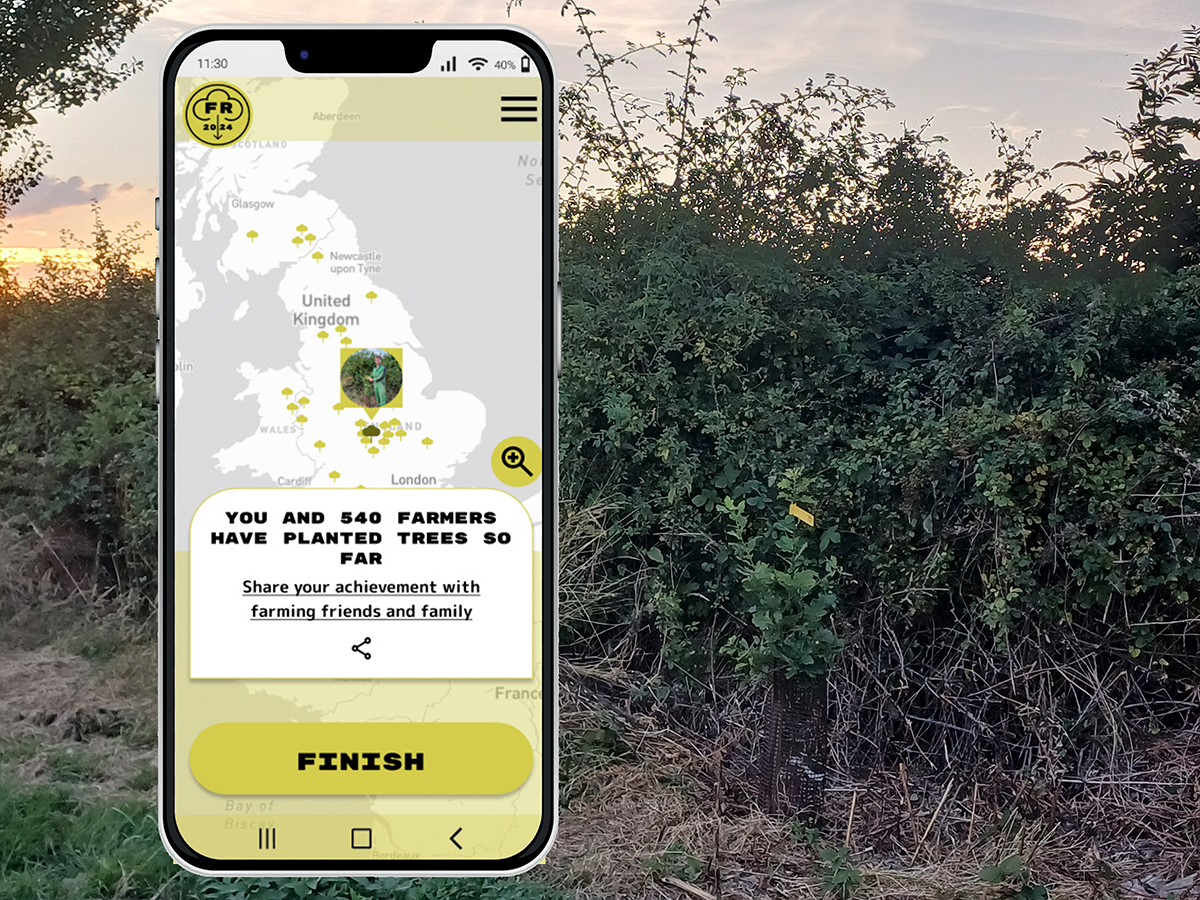
My journey to UX started in fine art, designing experiences to elicit emotion; where I developed a deep interest in viewer perception and how people think, which propelled my development towards user experience and service design. Maintaining a curiosity to go beyond the surface level problem and untangle more complex meaningful insights.
Throughout my master’s degree, this has been enhanced through studying Behavioural Change theory, using this to find pathways to effective, meaningful design. Putting this into practice in projects like my ‘shield laundry’ project about hygiene in clothes washing. As well as growing an understanding of designing at a human level, I also learnt about systems thinking, and keeping the bigger picture in mind, with an eye on long-term change and how an intervention fits into its context. This gave me a greater vocabulary to work with the complex problems, which enthuse me and brings value to the world.
Dealing with the complexities and ambiguities of working through these sorts of problems has also built my appreciation for thinking as a process and I feel that adding creativity into research and design is one of my strengths. This can be seen through being open to inventive question-driven methods, but is also there in simple, but critical, ways of reframing thinking to break through barriers. These elements come together to be showcased in my final Future Roots project.
Future Roots Project

The development of the Future Roots service revolves around the increasing movement towards sustainable agricultural practises and finding ways to help motivate this progress whilst supporting small UK farmers. These duel concerns became the guiding factors of the project.
The Problem
The Big Picture
Agriculture has been identified as key to reaching a Net Zero future and is in a period of global transition. To achieve these new policies like Sustainable Farm Incentives (SFI) have been introduced, however farmers in the UK have been resistant, giving rise to protests and a low uptake of incentives.
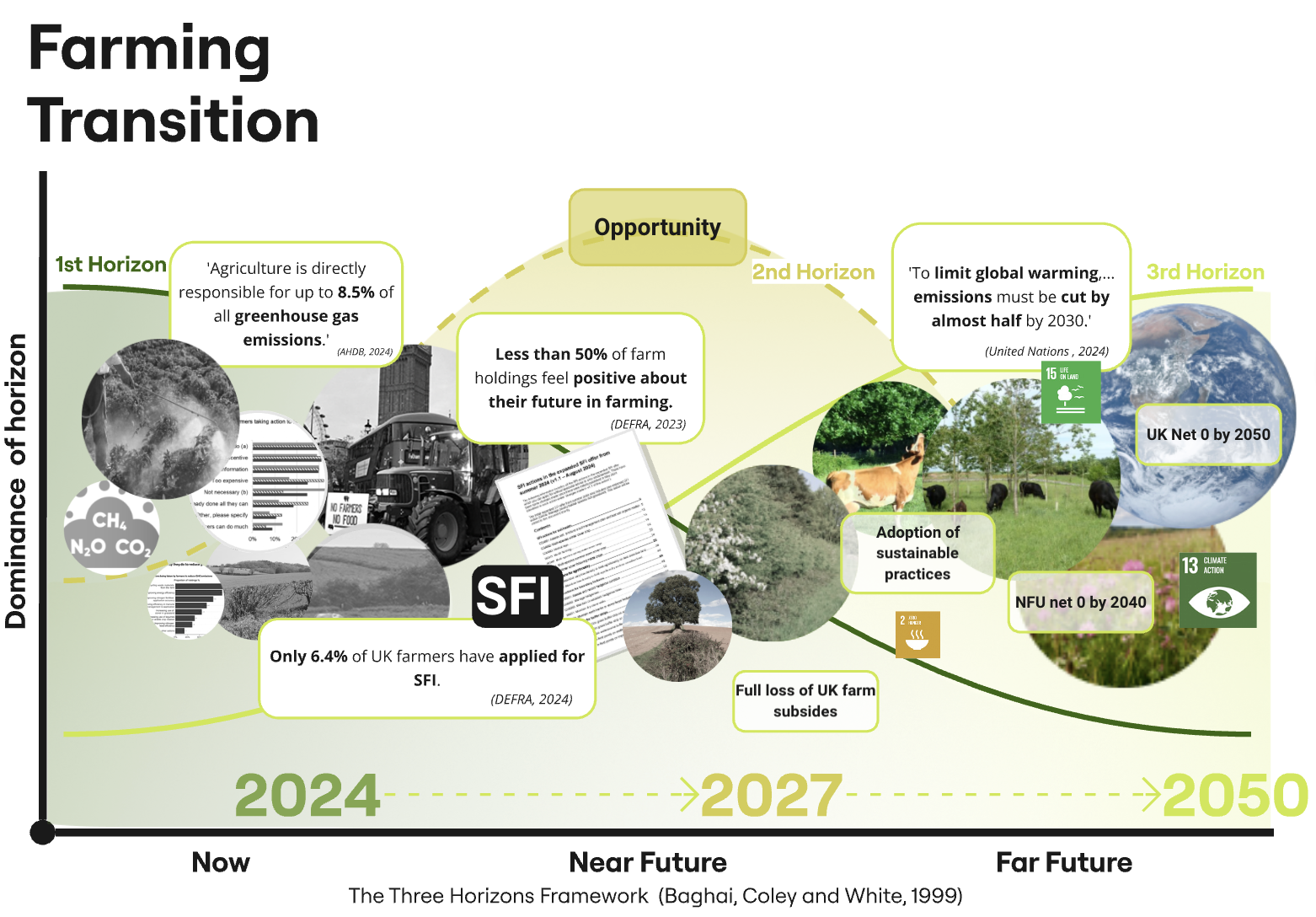
The Human Picture
This project focused on the farmer’s perspectives, asking why they were not acting by working through the surface level reasoning to a deeper consideration of motivation and capability.
These insights were displayed through the personas developed, along a scale of readiness to adopt sustainable agriculture, establishing that many farmers are stuck in a ‘Wait and See’ mindset. This seeming to relate to an inability to see a practical starting point, but with further integration revealed to be deeply entangled with their sense of farming identity, and not seeing sustainability as a part of this identity as food producers. Despite outward pro-environmental feelings, this led to a defensiveness to change and not actively looking for a starting point.
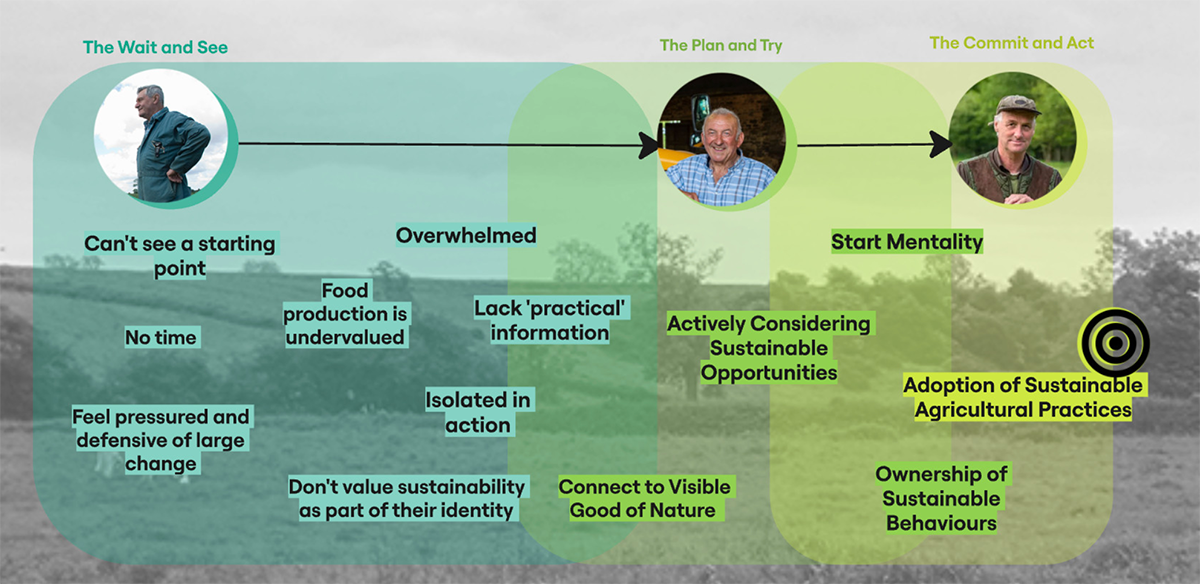
The Aim
The aim of the project became to move farmers into a ‘Start Mentality’ as a stepping stone to greater action and eventual ownership and adoption of sustainability agriculture. Or to:
Change a Wait and See farmer into a Plan and Try then Commit and Act farmer.
A catalyst for this change was established in the opportunity for a service to support small UK farmers with limited resources, who want to profitably move their farms into a sustainable future, but can’t see a practical starting point and are defensive of change. Expressing a need for something that meets farmers where they are, as a manageable first step towards greater action in the future. This is encapsulated in the four key design principles that drove Future Roots service development to allow the final design to fit the complex interactions of personal and business motivations of the user.
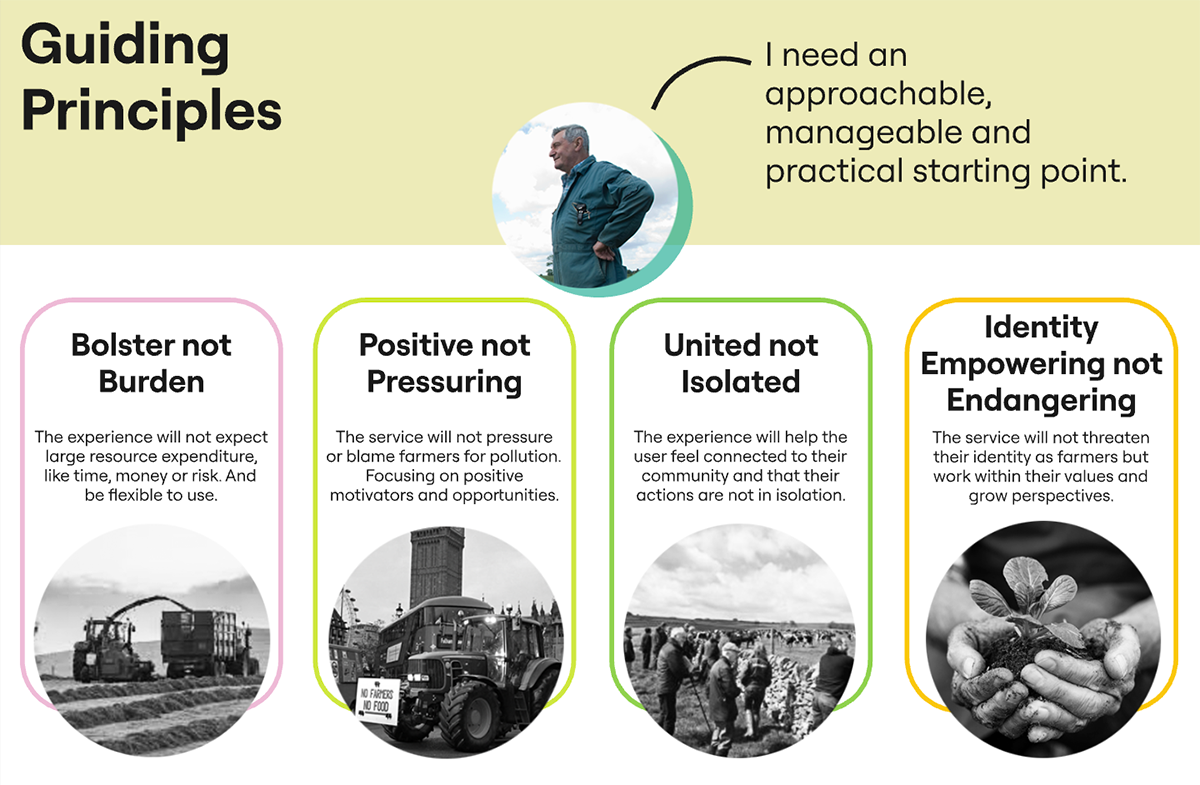
The Solution
Service Description
Future Roots is a not-for-profit service for UK farmers bringing together agri-environmental bodies, to provide a month-long campaign of collective environmental action and educational events, working as a manageable and appealing onboarding experience to farmings sustainable future, and sparking unity in the transition to net zero.
Overview
Future Roots has two key elements: collective action and educational routes of events. The first acting as an emotive hook rooting the intervention’s farming values, and the other ensures this motivation is harnessed productively through showing a practical and manageable first step.
Offering Routes to the Future, Rooted in Farming.
Onboarding to farmings sustainable future
Conceived as an onboarding to sustainable farming, Future Roots is designed to be transparent to the values of the services and opportunities available. Partnering with existing agri-environmental organisations to showcase their support and expertise in a more effective format. With the aim being for farmers to move past the service productively and outgrow it as sustainability is normalised. Future Roots also keeps an eye on the long term, intended to start as a regional pilot and expand in response to feedback, farmers changing needs and policy development.
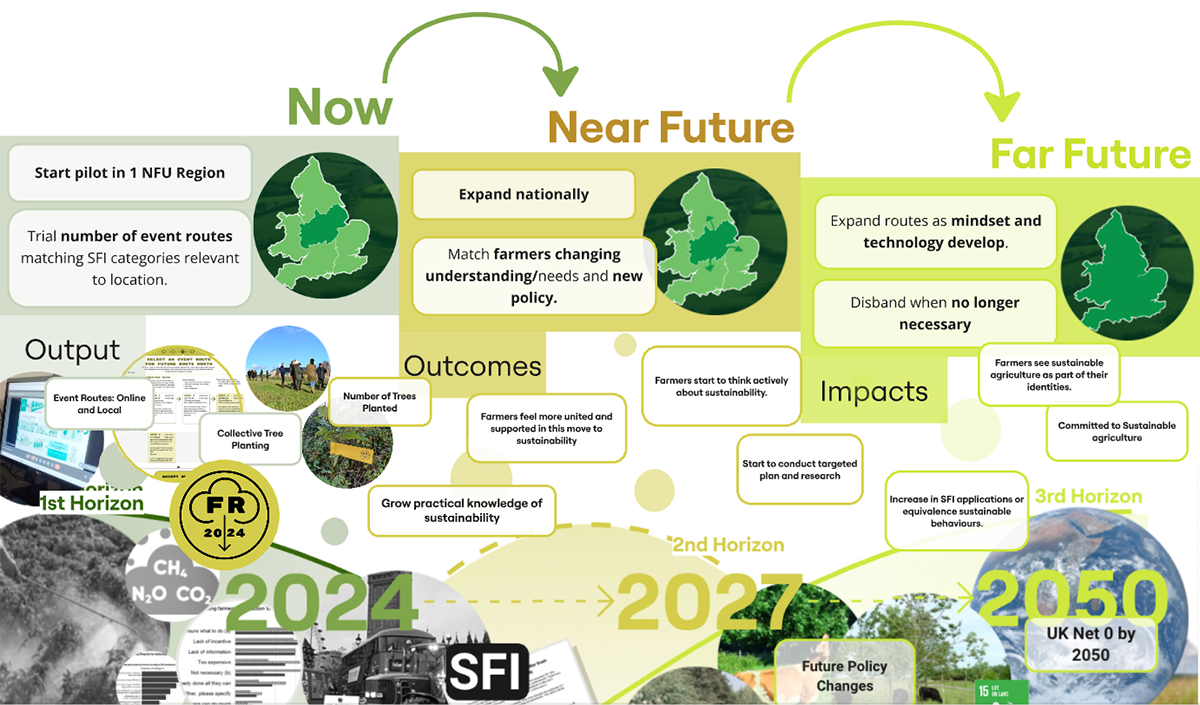
Routes to the Future
Our ‘wait and see’ farmers have a high threshold for engagement, having limited time, money and tech literacy, with preconceived biases. Therefore, Future Roots focuses on not burdening farmers with endless options, instead offering a recommended schedule of online and local events throughout the month, recommendations based on their location and farm type. These routes are designed to sit alongside farmers busy schedules and give them an introduction to a sustainability option that’s relevant to their farm.
Future Roots focuses on presenting farming as an opportunity, not the problem. Therefore, the service is conceived as deeply integrated with existing trusted agricultural organisations to further our mirrored aims of supporting farmers and the environment.
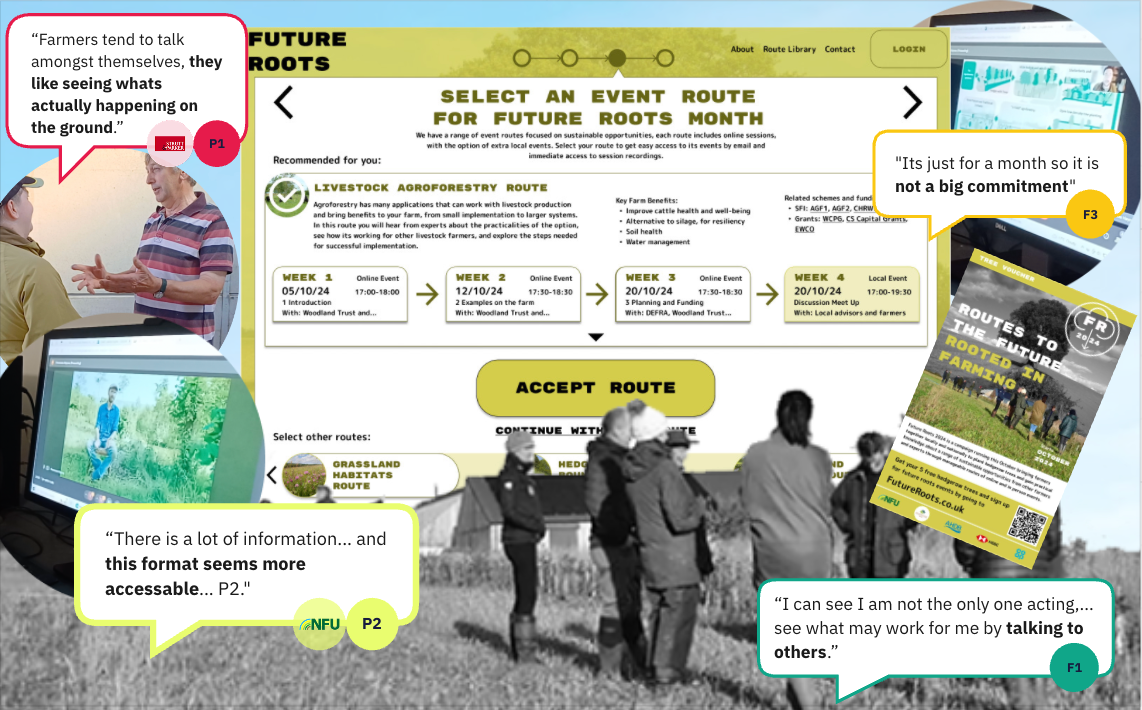
Rooted in Farming
The collective tree-planting action is the emotive draw of the service. Leveraging the parts of sustainability farmers already connect with, such as their connection to landscape and nature as an inherited legacy, to build positive associations.
By providing free hedgerow packs and facilitating planting, Future Roots gives a space to engage with sustainable actions at a comfortable scale, where they can try things out and build momentum. Highlighting the value this small action gives both at a national and personal level, by getting them to own the action by registering it on the live tree planting map displaying their combined effort. Making the action feel collective and uniting farmers was repeatedly shown to be instrumental in making this start point meaningful, and is intrinsic to the campaign, framing the start point becoming a collective event not an isolated chore. Displaying to farmers they are not alone in their actions and making them feel like a team on the path to net zero.
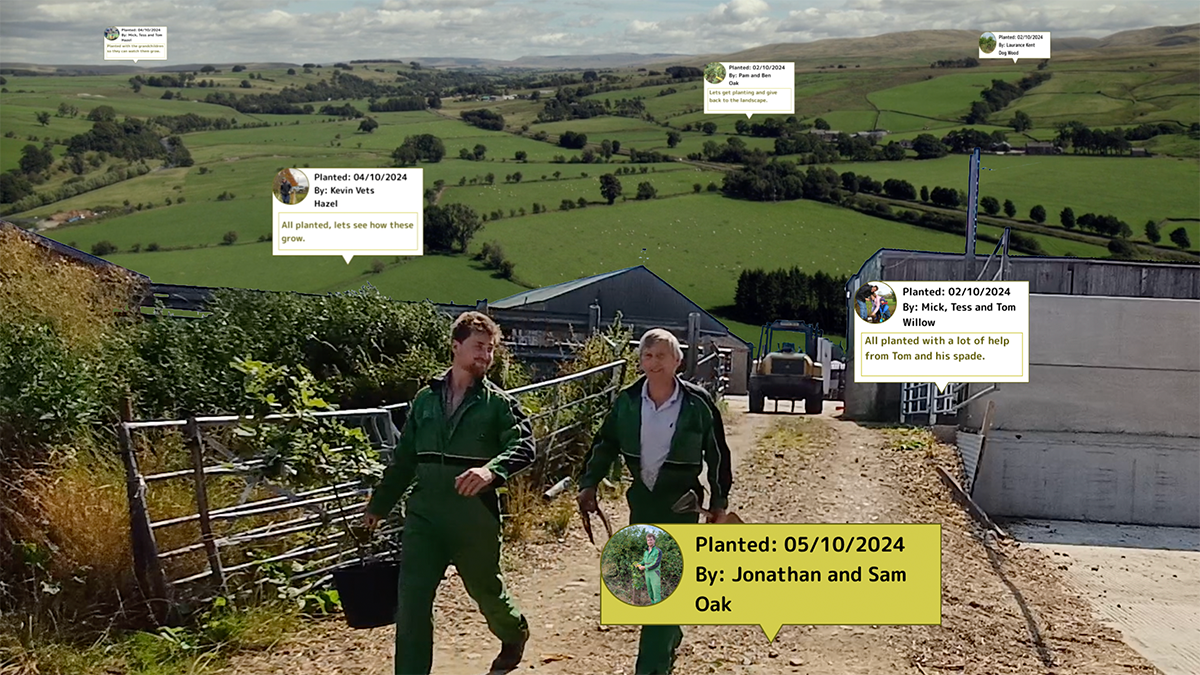
The Process
My process on this project was iterative, working in response to growing understanding, involving balancing the macro and human pictures by zooming in and out on the problem.
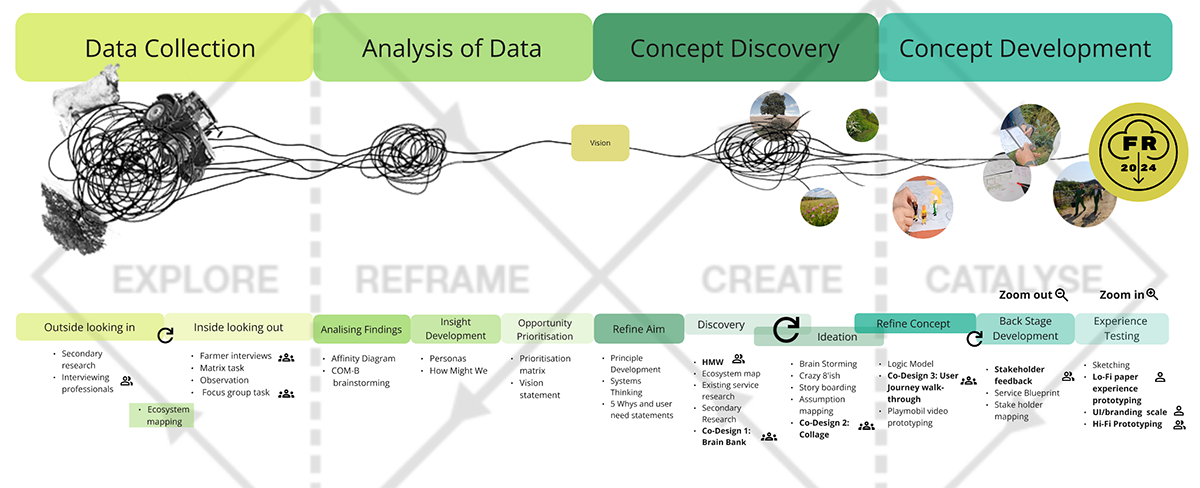
Data Collection
The initial stages involved framing the problem, working methodically to dig below the surface. Secondary sources were used to fuel questions, then explored through discussion with farmers and related professionals, using various ethnographic strategies like interviews, observation, and a focus group.
A useful step here was having farmers place different sustainable methods along a scale of appeal as a discussion tool to break past their reflexive answers.
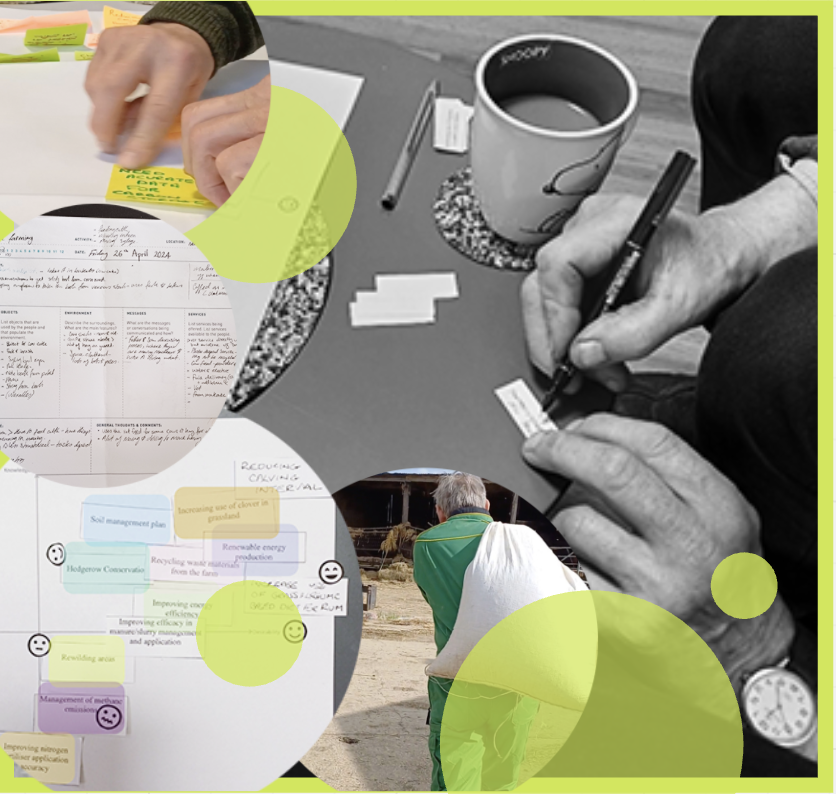
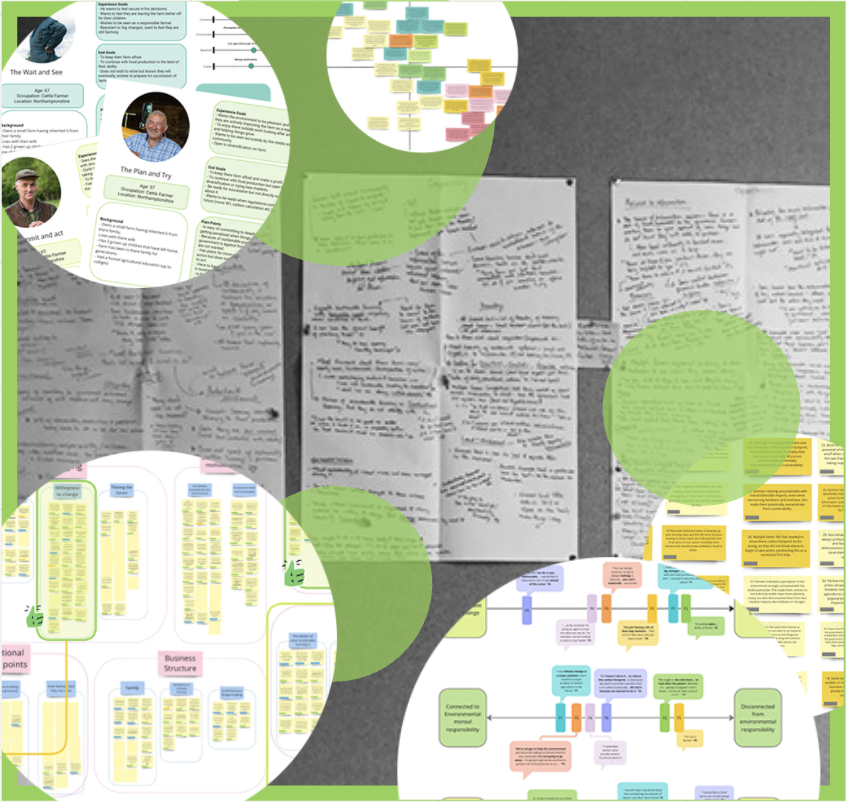
Data Analysis
Many of the key steps to transition to actionable insights were deceptively simple but critical. One such stage used the Com- B behavioural change model to categorise findings according to capacity, motivation, or opportunity in a mind map style diagram. The value in this was not finding a definitive element that was missing, but the process of trying to split the insights into these categories highlighting the question of what barriers to uptake were external and which were primarily from perception.
The importance of framing was also seen when struggling to find patterns in the formation of personas, coming together when thought of in terms of a scale. Leading to a recontextualization of the findings and the productive categorisations.
Concept Discovery
The breadth of the subject made the risk of getting lost trying to solve the whole problem a danger, so a systems thinking mentality was adopted to keep the context in perspective. Looking for gaps my service could occupy I noted that though there was information and opportunities available, the ‘wait and see’ farmer did not connect to them. Combined with the use of co-design to balance the big picture with the farmer’s needs, the idea of the service as this connection or onboarding to a sustainable future began to grow.
Ideating around this concept there was initially conflict between making a service that appealed to the farmers emotive sense of community and a ‘practical’ information service. A breakthrough came when revisiting sources about past interventions and my research, highlighting that to farmers a ‘practical’ starting point was based in emotion, specifically seeing other farmers act.
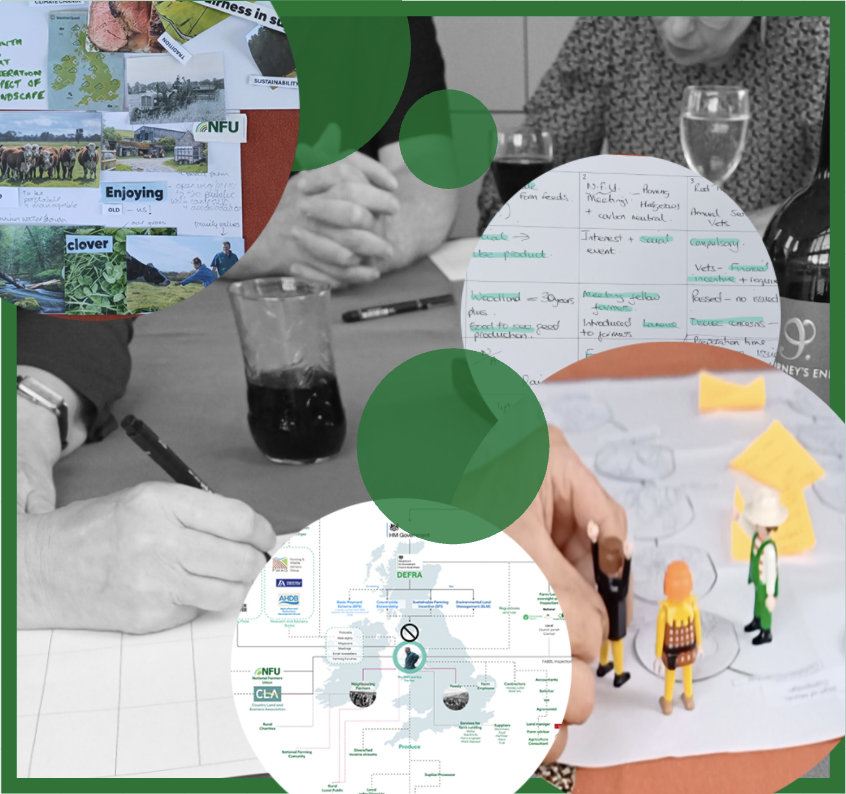
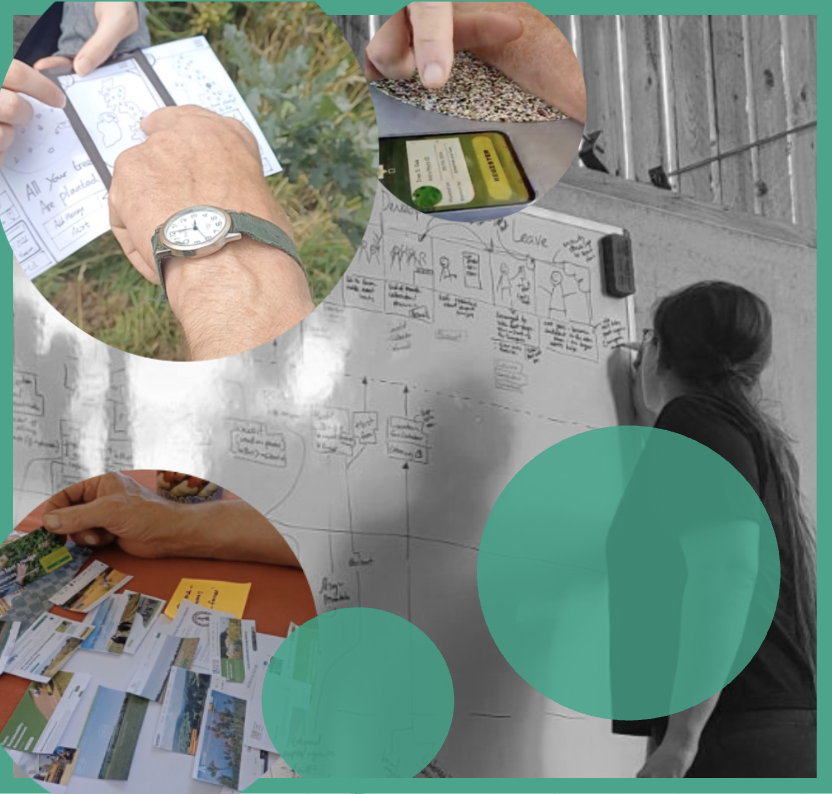
Concept Development
The concept was developed iteratively, starting by returning to co-design to have farmers walk through the user journey and make it their own. Through this a tension was noted between making the service convenient enough that farmers got on board and ensuring the collective action at the heart of the concepts transformative potential was realised.
The questions this raised were worked through, with iterative prototyping used to develop thinking such as storyboarding, serious play and video creation. These were used to gain further feedback from stakeholders in the agricultural space working to develop a service blueprint. More evaluative prototyping was used to refine user touchpoints, especially the UI components as many farmers had relatively low technical confidence and the concept needed testing in the context of use.
My Aspiration
I have a hunger to continue to work with complex projects and challenge myself, I am a question driven person and am eager to use the skills I have gained to address issues in the world to the benefit of users. Looking for the chance to be part of a team working to solve bigger problems in creative ways.
I have had the opportunity to work with a range of topics, from health and hygiene to energy use, being diversely curious these have all been engaging, but I always found myself being drawn to the deeper empathetic aspect of them, how people think and perceive the world still driving me. With areas like health particularly interesting because of being intertwined with behavioural change. I am excited to continue to bring my creativity and implementation of emotional and perceptual considerations to research and design work.
Through my education I have procured a diverse knowledge base and an appreciation for fresh perspectives. I would value the chance to build on this further looking for an opportunity where I can contribute to innovation and build my skills. So that I can grow to be the best designer I can for my users, clients, and colleagues, in a career that encompasses creativity, problem solving, and research whilst having a tangible positive impact on the world.
Thank you for reading through my showcase, I hope you found it interesting.
If you wish to see more of my work, have a look at my portfolio at: https://www.haynesa96.com/, or get in touch with me at haynesa96@gmail.com to discuss it with me further.
I hope I get the chance to solve problems with you.
